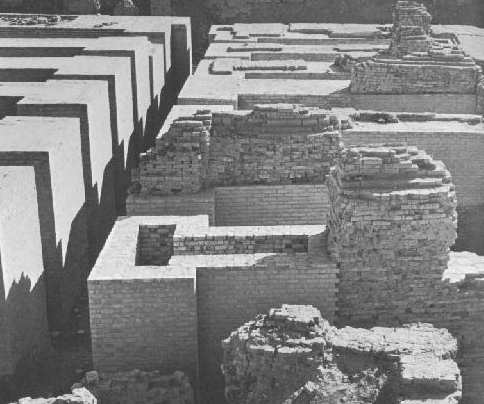Nebuchadnezzar, c.605-562 BC
Nebuchadnezzar is proposed as the garden builder by the late writer Berossus. Like Semiramis, Nebuchadnezzar was real and figures in the Old Testament—but he is treated very differently from Semiramis.
His Human Frailty
Nebuchadnezzar is always shown as 100% human. He makes mistakes, he is a cruel tyrant, and he so proud of his unspecified building achievements that God punishes him with insanity—after which he is forgiven and lives on to sing the praises of the Lord. (Check it out in the first few chapters of Daniel.) Where Semiramis represents a doomed challenge to God, Nebuchadnezzar represents the saving power of God.
Archaeology
Nebuchadnezzar has some archaeology on his side too. Most of the bricks surviving from Babylon and its hinterland are stamped with Nebuchadnezzar's name. So we know that he, like Semiramis, oversaw many elaborate building programs at Babylon.
But his case is weakened when we remember that the most likely archaeological site of the gardens (found by Koldewey, below) actually fits the Semiramis description better than the Nebuchadnezzar description.
Written Records
Nebuchadnezzar's building activities in Babylon and elsewhere are well documented in the written record but there is no mention that he built any hanging gardens in Babylon. On the other hand, records do survive that he built several such in the coastal city of Teredon.
These records are much earlier than Berossus' Babylonaica, yet they are not taken into account anywhere on the web (I found them by accident when seeking to unwrap our sources on Berossus).
Case For Nebuchadnezzar
As with Semiramis, it is important to remember that our perceptions of Nebuchadnezzar are prejudiced.
- There is physical proof that he existed and built parts of Babylon
- He experiences salvation in the scriptures, representing God's goodness
But these indications are irrelevant to the question of whether he built the Hanging Gardens of Babylon. They merely present him in a positive light that appeals to modern western culture.
When we remember that Berossus' attribution is very late and deliberately contradicts a well-established foreign record, we can see that the case for Nebuchadnezzar is weaker than it originally seemed.
And when we also consider that no fewer than four earlier sources conflict with Nebuchadnezzar's claim (two by attributing the gardens to Semiramis, and two by placing Nebuchadnezzar's gardens in a distant city), the case becomes weaker still.
